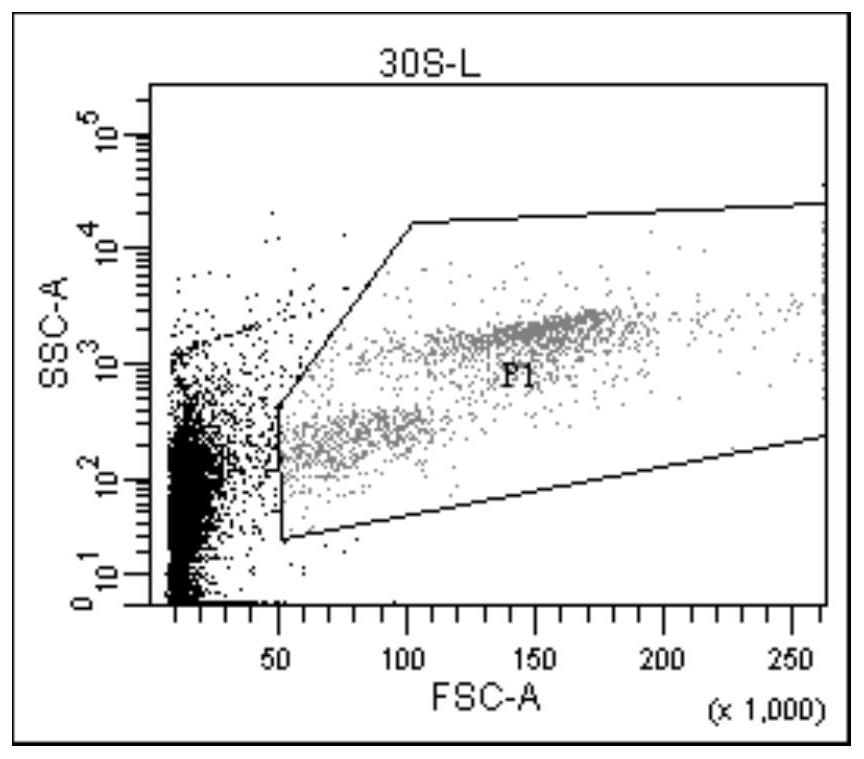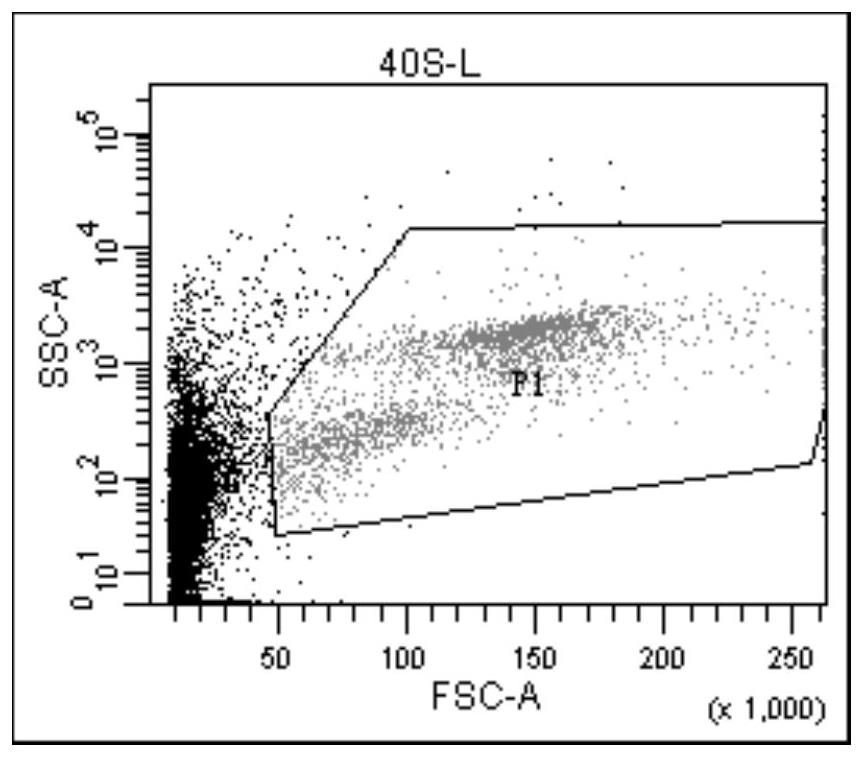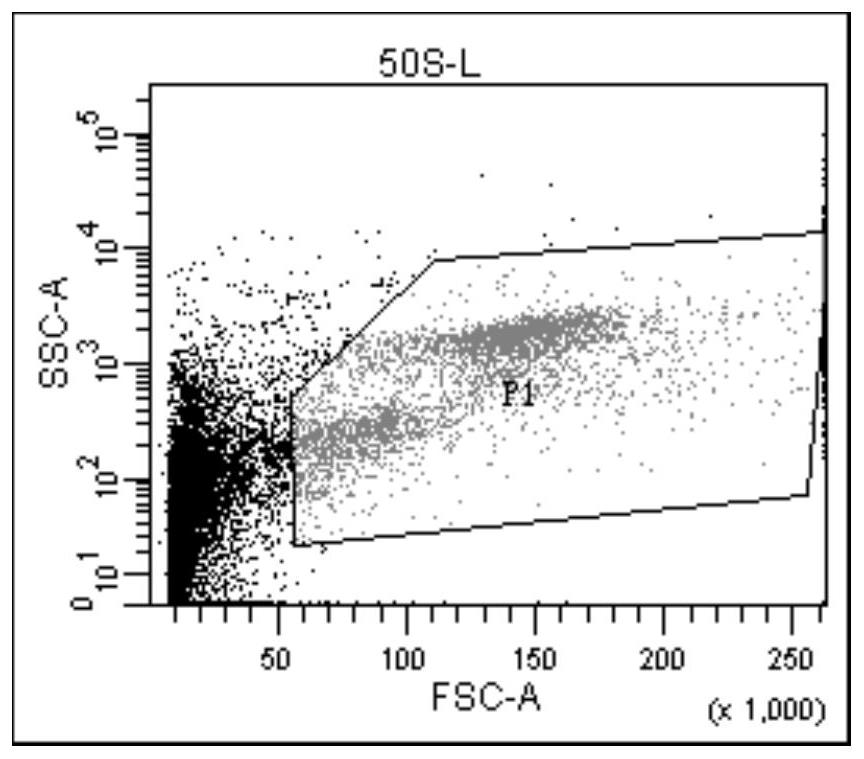Application of flow cytometer in cell counting and method
A flow cytometer and cell counting technology, applied in scientific instruments, particle and sedimentation analysis, measuring devices, etc., can solve the problems of increasing the economic cost of detection, small share, and the inability to know the exact or absolute sample volume injected. , to overcome the heavy dependence on special counting instruments and consumables and personnel, meet clinical needs, and facilitate rapid detection
- Summary
- Abstract
- Description
- Claims
- Application Information
AI Technical Summary
Problems solved by technology
Method used
Image
Examples
Embodiment 1
[0067] Embodiment 1 Cell counting of the present invention compares with conventional counting plate counting method detection accuracy
[0068] The consistency of different acquisition speeds and acquisition times of the present invention and counting plate counts for the detection results of the same specimen were compared respectively.
[0069] Take 6 cases of clinical samples (clinical samples are bone marrow or peripheral blood of patients), including acute myeloid leukemia samples (sample number #1), acute lymphoblastic leukemia samples (sample number #2), chronic myeloid cell Leukemia specimen (sample number #3), myelodysplastic syndrome specimen (sample number #4), neuroblastoma specimen (sample number #5), myeloproliferative neoplasm specimen (sample number #6), Count according to the following methods:
[0070] 1) Sample preparation: Take 10 μl of the aforementioned specimen, put it into 390 μl of red blood cell lysate (commercial reagent, manufacturer: Lianke Bio, ...
Embodiment 2
[0095] Example 2 Application of Flow Cytometry to Count and Compare Between Different Personnel
[0096] Compare the consistency of counting results of the same specimen by different experimenters.
[0097] Take 10 cases of clinical samples, including acute myeloid leukemia (sample number #7-8), acute lymphoblastic leukemia (sample number #9-10), chronic myeloid leukemia (sample number #11-12 ), myelodysplastic syndrome (sample number #13-14), neuroblastoma (sample number #15), myeloproliferative neoplasms (sample number #16). For the cell counting method, refer to the operation method in Example 1. The test results are as follows:
[0098] Table 2: Comparison results among different personnel for counting by flow cytometry
[0099] Specimen number Person A Person B CV value (100%) #7 31.6 29.8 4.1 #8 26.1 26.9 2.1 #9 187.5 193.4 2.2 #10 46.5 48.5 3.0 #11 158.1 166.8 3.8 #12 252.2 274.6 6.0 #13 119.3 125 3.3 ...
Embodiment 3
[0101] The influence of embodiment 3 different erythrocyte lysate volumes on counting result
[0102] The present invention uses a specimen volume of 10 μl, and compares the volumes of different erythrocyte lysates. If the volume of the cell suspension is too small, the volume of the suspension cannot meet the requirement of obtaining the cells for 30 seconds after the liquid flow stabilizes, so start the experiment with 190 μl of lysate. However, if the volume of the cell suspension is too large, the cell concentration will be small, the number of cells obtained will be small, and the boundary between cells and debris will not be clear. Therefore, the effects of 190μl, 290μl, 390μl and 490μl of erythrocyte lysate on the counting results were compared respectively. Other steps are with embodiment 1.
[0103] 6 clinical specimens were taken, including acute myeloid leukemia specimens (sample number #1), acute lymphoblastic leukemia specimens (sample number #2), chronic myeloi...
PUM
 Login to View More
Login to View More Abstract
Description
Claims
Application Information
 Login to View More
Login to View More - R&D
- Intellectual Property
- Life Sciences
- Materials
- Tech Scout
- Unparalleled Data Quality
- Higher Quality Content
- 60% Fewer Hallucinations
Browse by: Latest US Patents, China's latest patents, Technical Efficacy Thesaurus, Application Domain, Technology Topic, Popular Technical Reports.
© 2025 PatSnap. All rights reserved.Legal|Privacy policy|Modern Slavery Act Transparency Statement|Sitemap|About US| Contact US: help@patsnap.com



